Best cycling shoes: The foundation of every great ride
We have tested the best road cycling shoes to find the perfect combination of high performance and high comfort
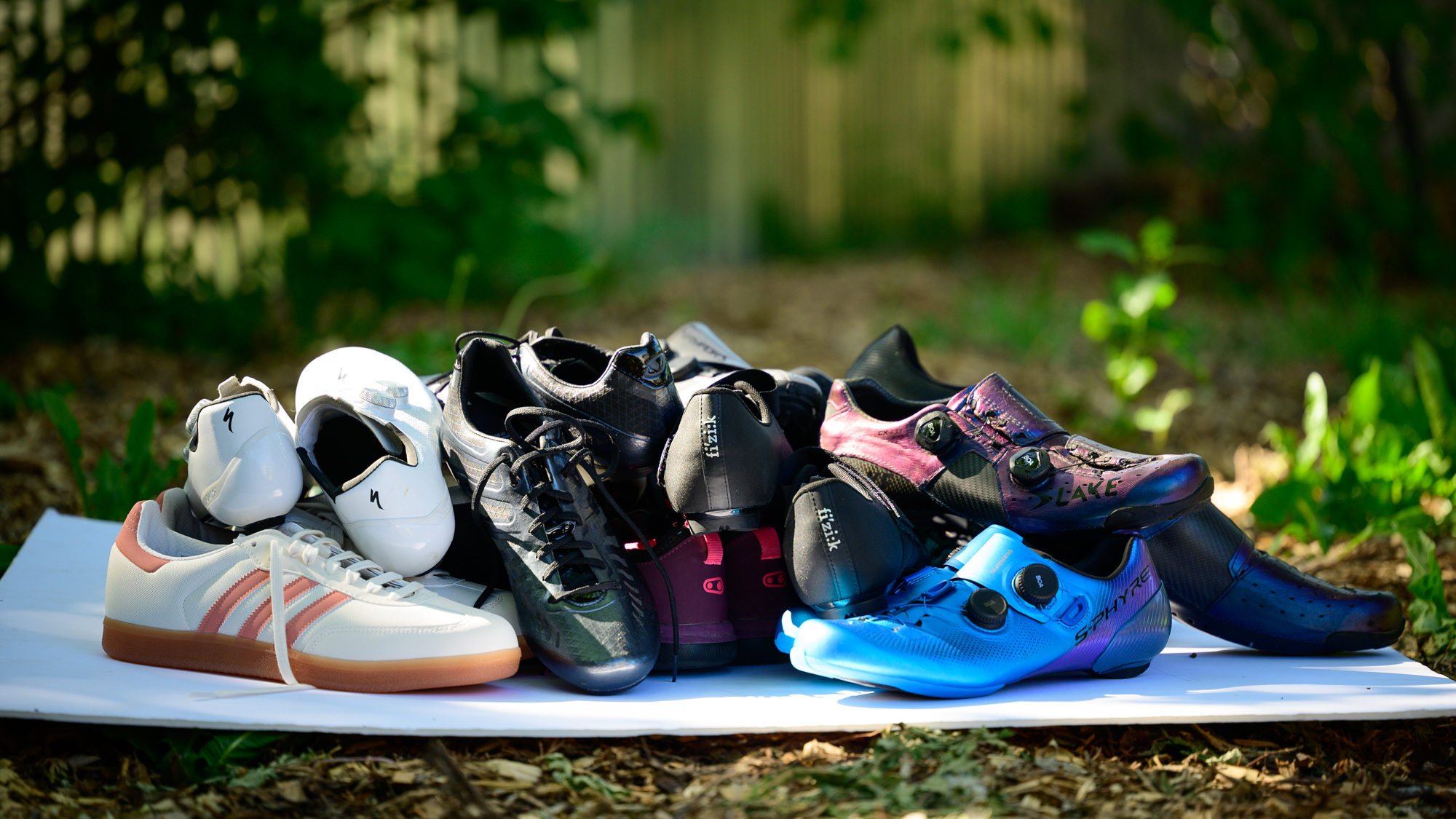
The connection between your feet and the pedals is so critical that if you get it right, you can do more than you ever thought possible. Get it wrong though, and no amount of perseverance will carry you through. It doesn't matter how much time you've invested in training and preparation, if you start experiencing pain in your feet it can derail everything.
Cycling shoes weren’t always quite so critical. At one time it was common for bikes to use a flat pedal and regular shoes. The next innovation was to add a toe clip that allowed a regular shoe to have a better connection to a bike. Then, in the 1970s and 80s, Cinnelli and Look developed a technology paradoxically called clipless pedals. There's no need for a toe clip anymore but you depend on the design of the shoe to anchor your feet to the pedal.
These innovations have led to today's best bike shoes being an extension of the best road bike pedals. For the best cycling shoe brands that means, the vast majority of options use a three-bolt cleat interface. There's also a two-bolt fitment which is primarily reserved for the best gravel bike shoes. Here, the cleat is smaller and recessed into the sole, while the shoe itself has a tread for grip, making them among the best commuter cycling shoes too.
Towards the bottom of this post, we have advice on how to choose the best road cycling shoes for your needs.
Quick list
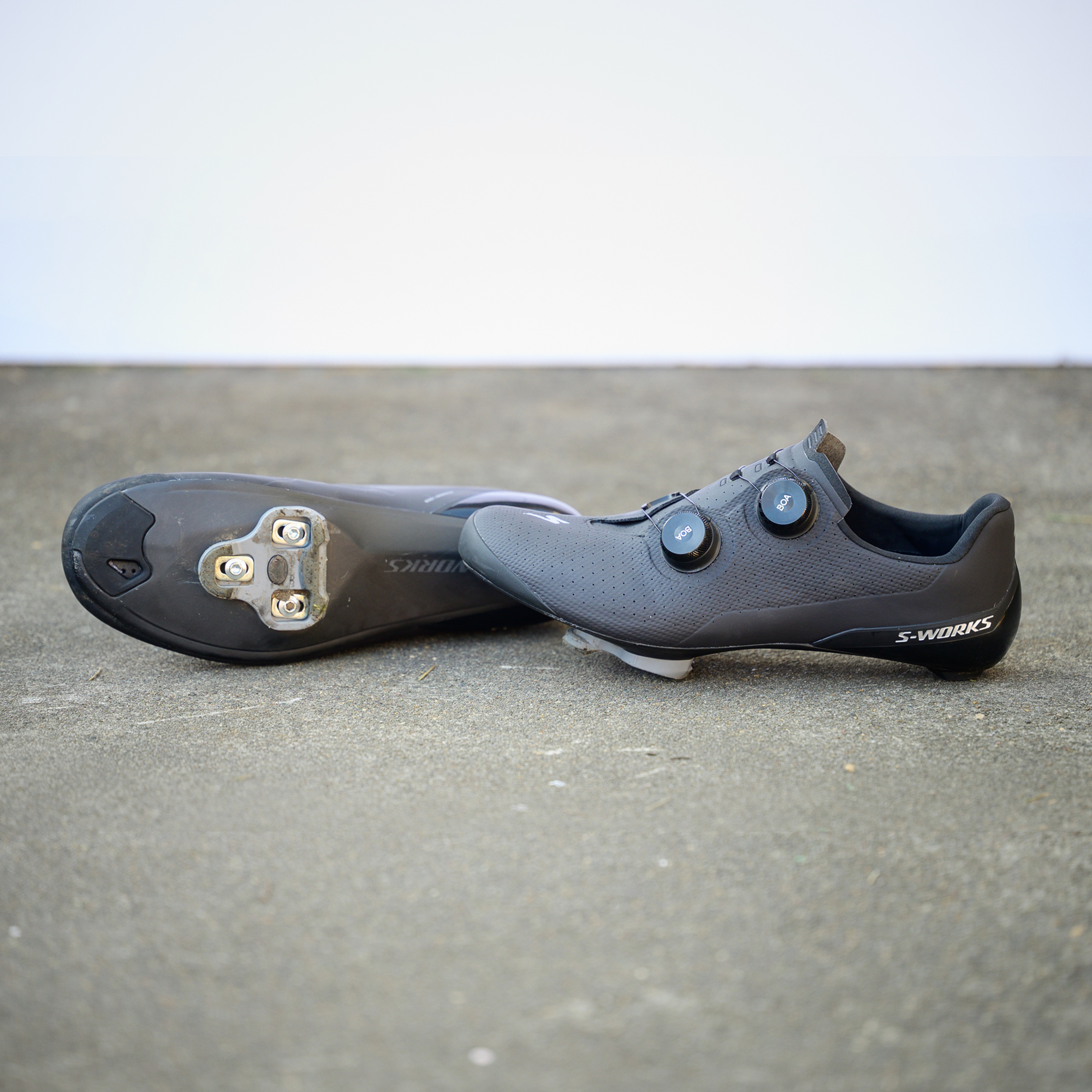
Specialized's Torch delivers incredible all round levels of comfort, support and performance. While they may not necessarily excel in one area, the overall performance is hard to beat.
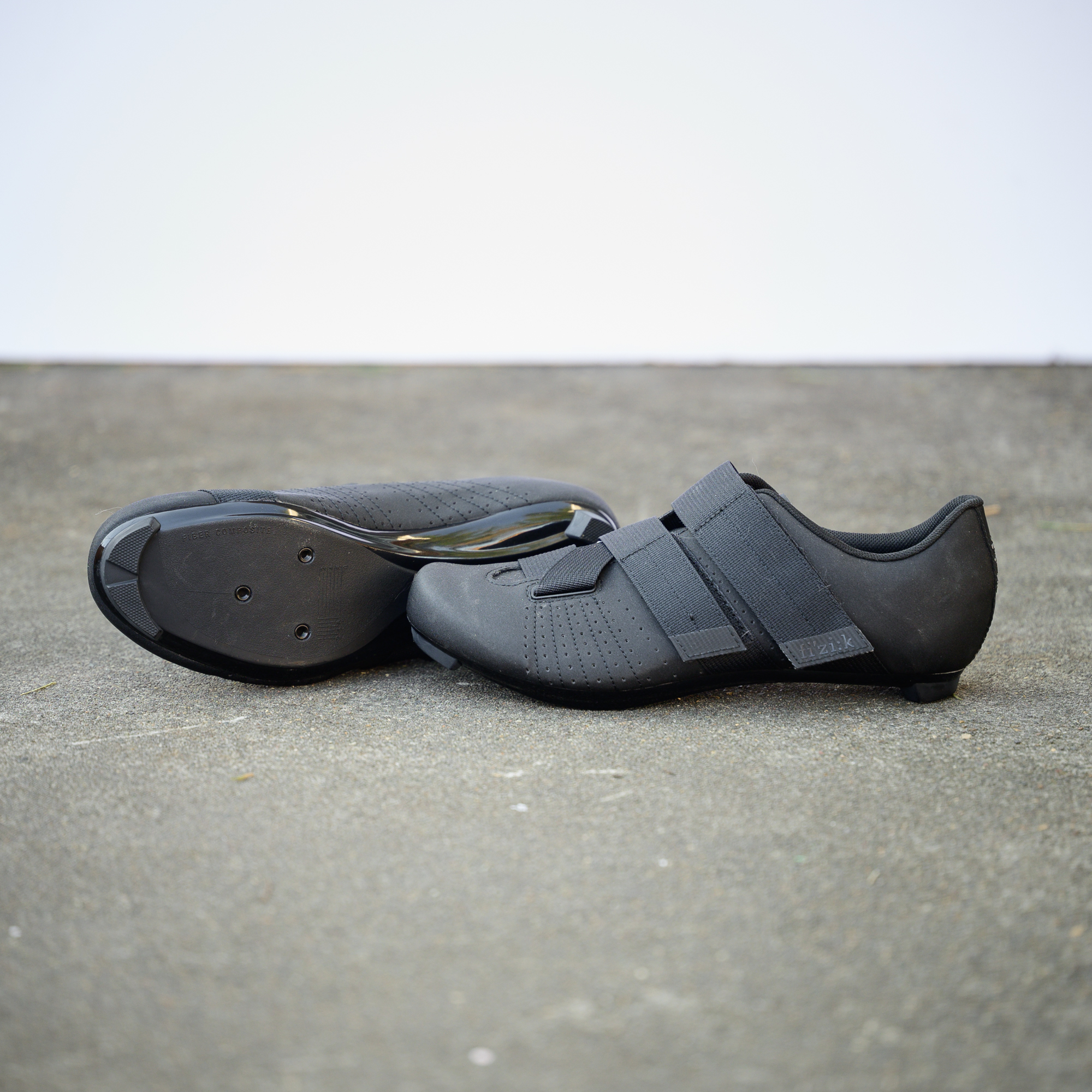
Fizik avoids the expense of BOA dials and instead uses the same retention system found on some of the brand's top-shelf shoes. Comfortable and capable, these shoes punch above their price category.
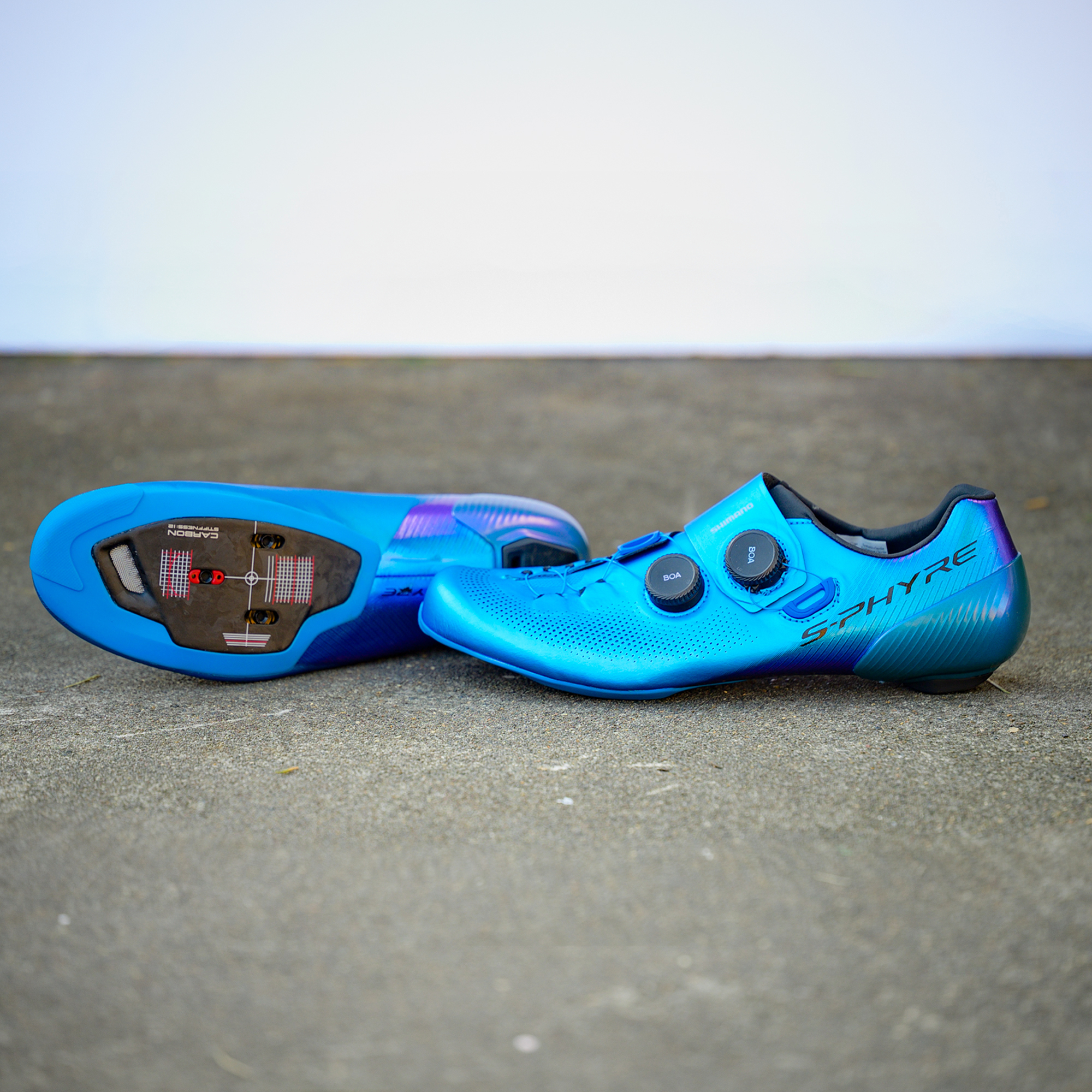
Finding an off-road shoe with a carbon sole stiff enough for long days and mixed surfaces while also having enough protection to handle running up a rocky ascent is like finding a unicorn. The Rapha Explore Powerweave is one of those unicorns.
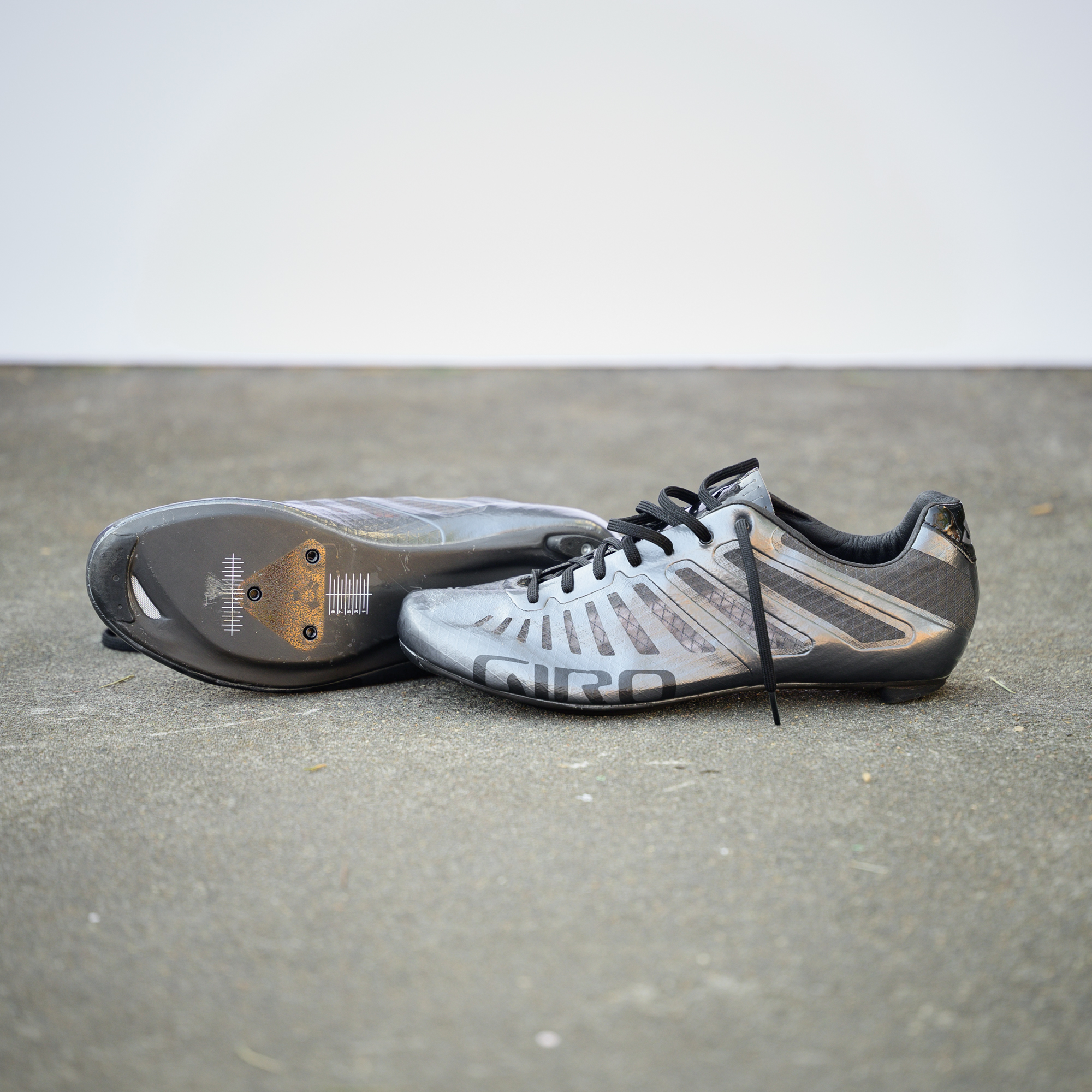
The Giro Empire SLX is, in some ways, a shoe from another era of cycling. The laces are certainly a throwback but every detail is focused on making it as light and airy as possible, resulting in a precise shoe that feels like a ballet slipper.
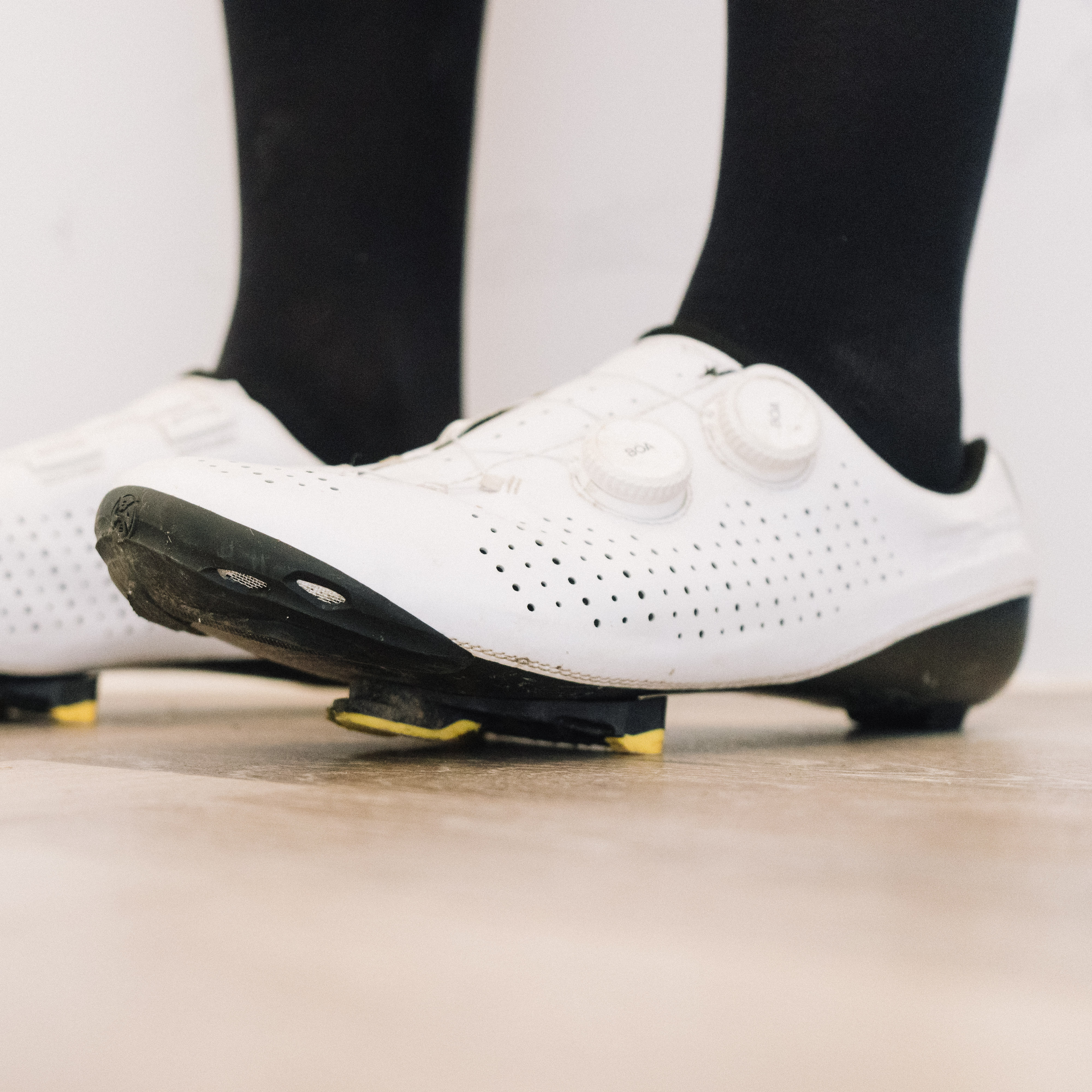
The Bont Vaypor is custom mouldable with one of the stiffest outsoles on the market. The fact you can mould these in your own home, plus options for wider fit models, semi-custom, or full custom options should cover every foot shape.
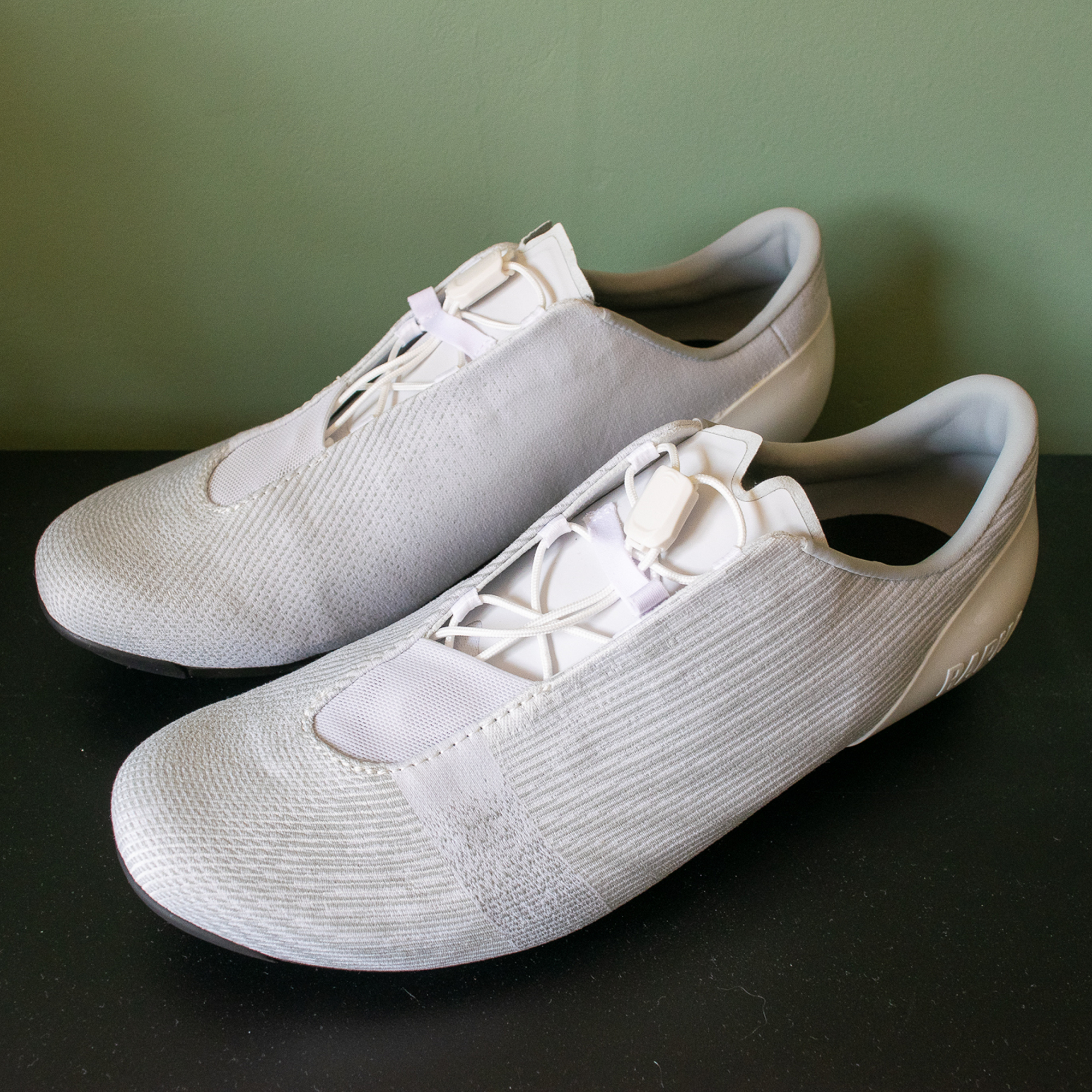
While they aren't conventional laces, we think Rapha's improves on the classic format. The Speed Lace system offers quick fitting and easy adjustment with the tuneable comfort of laces.
Read more below
Recent updates
November 27th The guide received a large overhaul adding new products, and imagery and updating the layout to help provide more concise product information for the reader.
The best cycling shoes available today
Best road cycling shoes
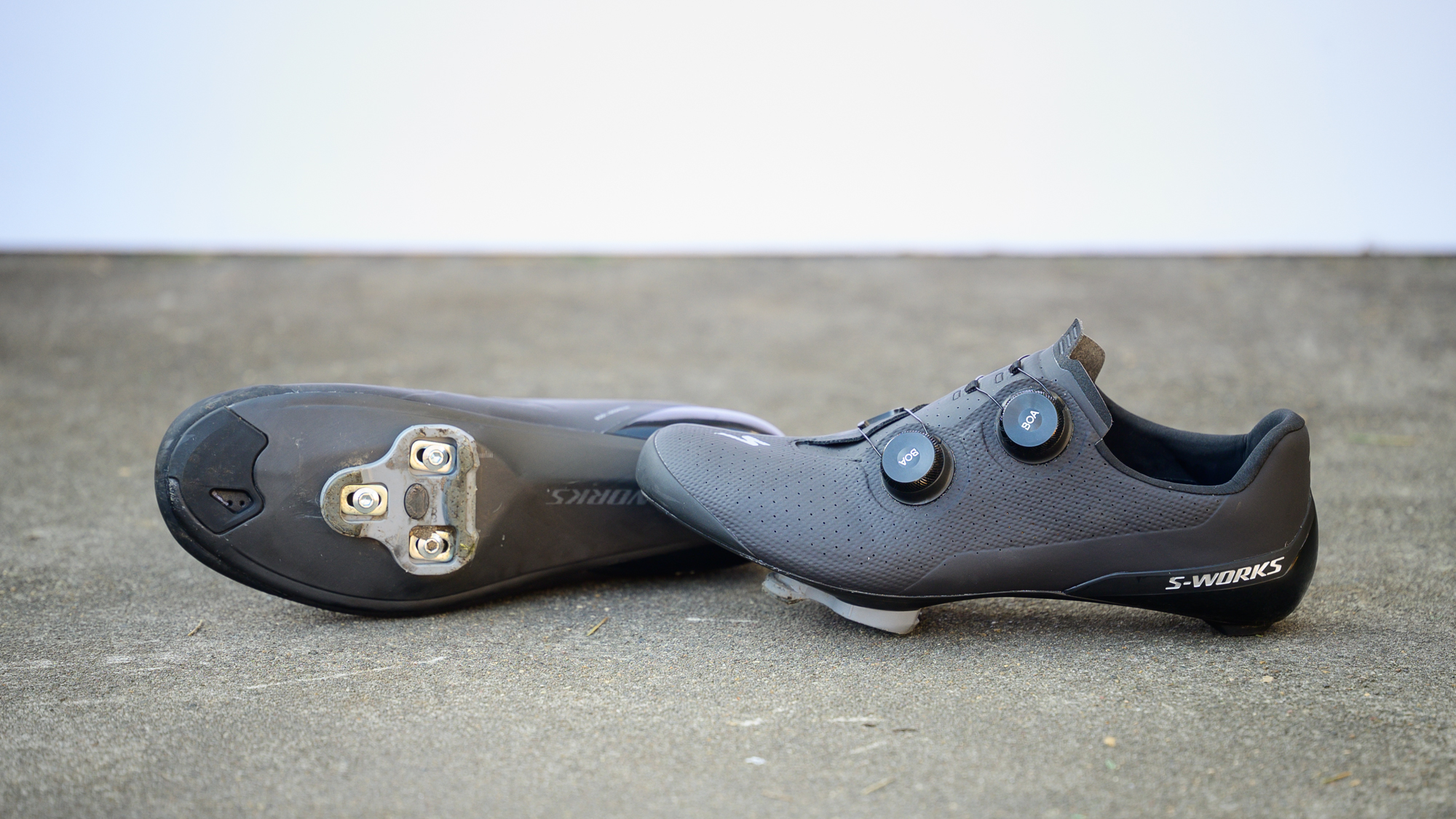
Specifications
Reasons to buy
Reasons to avoid
✅ You want a road shoe that excels at all types of riding: The S-Works Torch is the perfect blend of performance and comfort making it a superb option no matter the ride. Standard and wide fits should cover most foot shapes and the stiff carbon sole with well constructed upper make every pedal stroke count.
✅ You want a great looking shoe: Specialized's minimal branding and simple design give the S-Works Tworch a clean aesthetic.
❌ You want an affordable shoe: Being labelled S-Works signifies this being the best road bike shoe Specialized makes and thus commands a high price. For something more affordable, Specialized offers three Torch models for mid and low budgets.
Over the years, Specialized has been shifting the shape of the shoes the brand makes. More and more the toe box is wider with more room, making comfort on a par with the best road cycling shoes. The Specialized S-Works Torch is the replacement for the S-Works 7 and measures 4mm wider at the ball than the previous generation cycling shoe.
The changes aren't just the work of intuition either. Specialized pulls from the trends seen through over 100,000-foot scans as part of the in-house RETÜL fit system. The same data also guides the particular shape of the central cut-out as well as the angle of BOA dials and the way that they sit on the shoe. It's also data you can feel when putting on the shoe.
The end result is a cycling shoe that seems to be good at everything. Short rides, endurance rides, racing, day in and day out the S-Works Torch is a shoe you can grab and know it will work. I've highlighted several shoes that are good at a particular thing. The S-Works Torch is more of an all-arounder and while some shoes are polarising, the Torch will work for almost everyone. If you want a great road cycling shoe without having to decide if a certain use case is right for you, grab the Torch.
It's also nice that the outer is so hard-wearing. Since you are likely to be wearing the S-Works Torch a lot, things like reinforced uppers, protection at the toe against toe rub, an easy-to-wipe-clean outer, and metal BOA dials are an advantage. Unfortunately, those BOA dials, while looking great and holding up well, do lack pop-to-release.
Read more details in our full Specialized S-Works Torch review.
Best budget cycling shoes
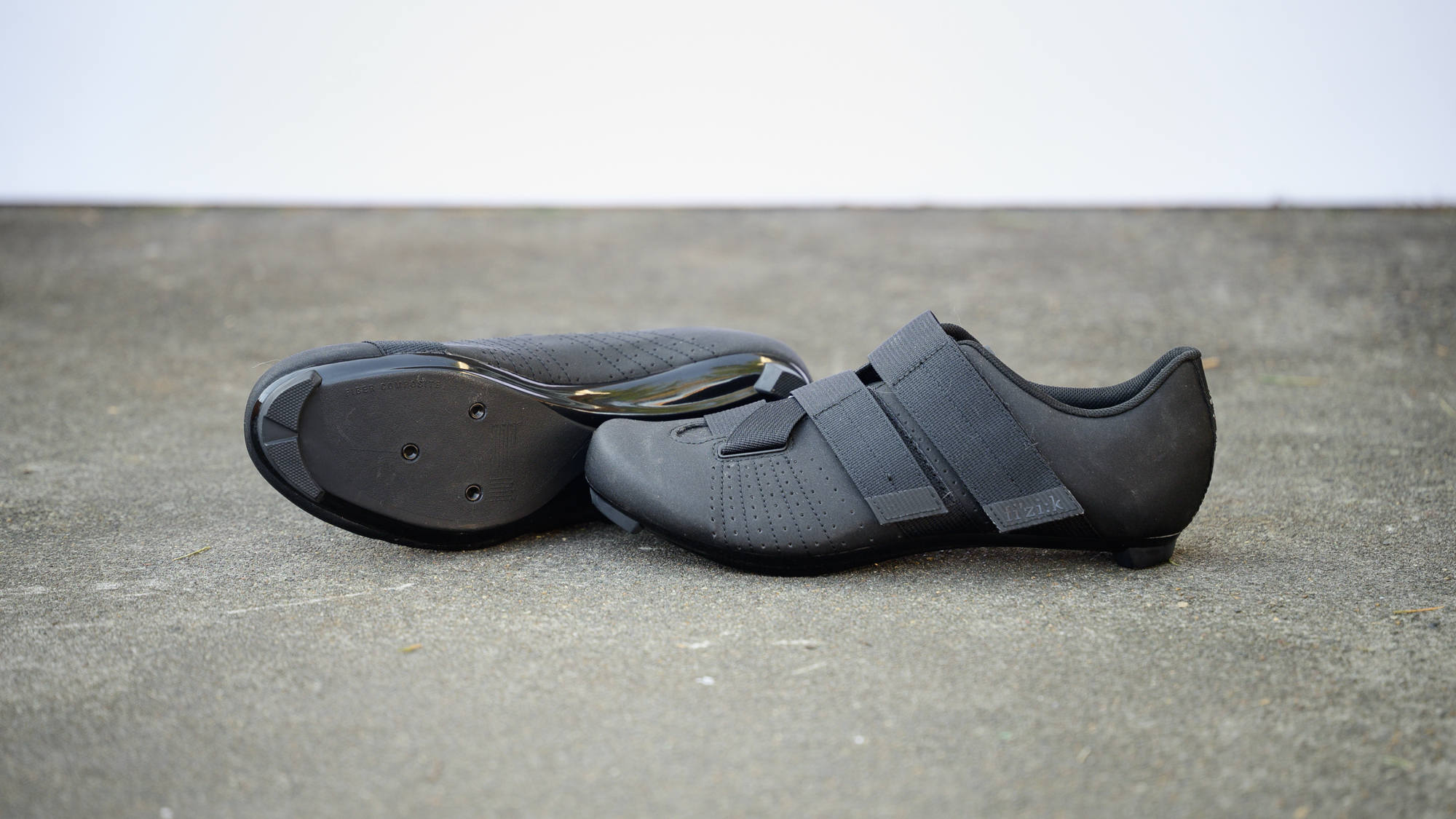
Specifications
Reasons to buy
Reasons to avoid
✅ You want an affordable road shoe: Considering the specs, the Fizik Tempo R5 Powerstrap offer excellent performance for a reasonable outlay.
✅ You want the simplicity of a velcro closure: The Powerstraps are easy to use and give a firm closure across the foot
❌ You don't want to make fine-tune fit adjustments: Velcro doesn't give the versatility of laces or the adjustability of a BOA dial when on the move.
❌ You ride in hot weather: Ventilation isn't specifically bad, however Velcro strap coverage reduces ventilation in the uppers and there is no sole vent.
The Fizik Tempo Powerstrap R5 is going to be somewhat controversial as an overall best-budget cycling show selection. BOA dials dominate the options for modern cycling shoes and many cyclists consider them a must-have. I kind of agree and yet, these shoes have none.
My reasoning has to do with price and available options. Quite simply, BOA dials cost money. BOA is a separate company and using them means licensing the technology. When it comes to budget shoes, that cost tends to put dual zone adjustments out of reach and even the single BOA dial used is often one of the lower-spec options without all the features that make BOA great. Fizik gets around this challenge by just leaving BOA dials off the design and instead using an innovative system of big straps and Velcro.
The straps that Fizik uses aren't like what you find on other brands of shoes. Instead of a stiff strap that pulls the opening above the tongue closed, Fizik connects the straps of the Tempo Powerstrap R5 all the way down to the base of the shoe. The strap material is also different and it's both strong and flexible with no pressure point. The whole system sits close to the shoe, making it fast and simple to get the fitment perfect, and if you need to pull some kind of winter cover over, there's nothing to get in the way.
The downside of course is that there is no BOA dial. It's still pretty easy to adjust mid-ride if you have to, but it will never be as simple, or precise, as a BOA dial. The shoes are also a bit on the warm side as they lack a vent through the sole of the shoe.
Fizik frequently creates two shoes that are exactly the same, other than one will have a two-bolt cleat interface and tread and one will have a road-specific base. That’s the case with the Tempo Powerstrap R5 as well, so if you prefer walkability for your road bike, or if you need a gravel shoe, check out our review of the Fizik X4 Terra Powerstrap.
Best cycling shoes for cleat adjustment
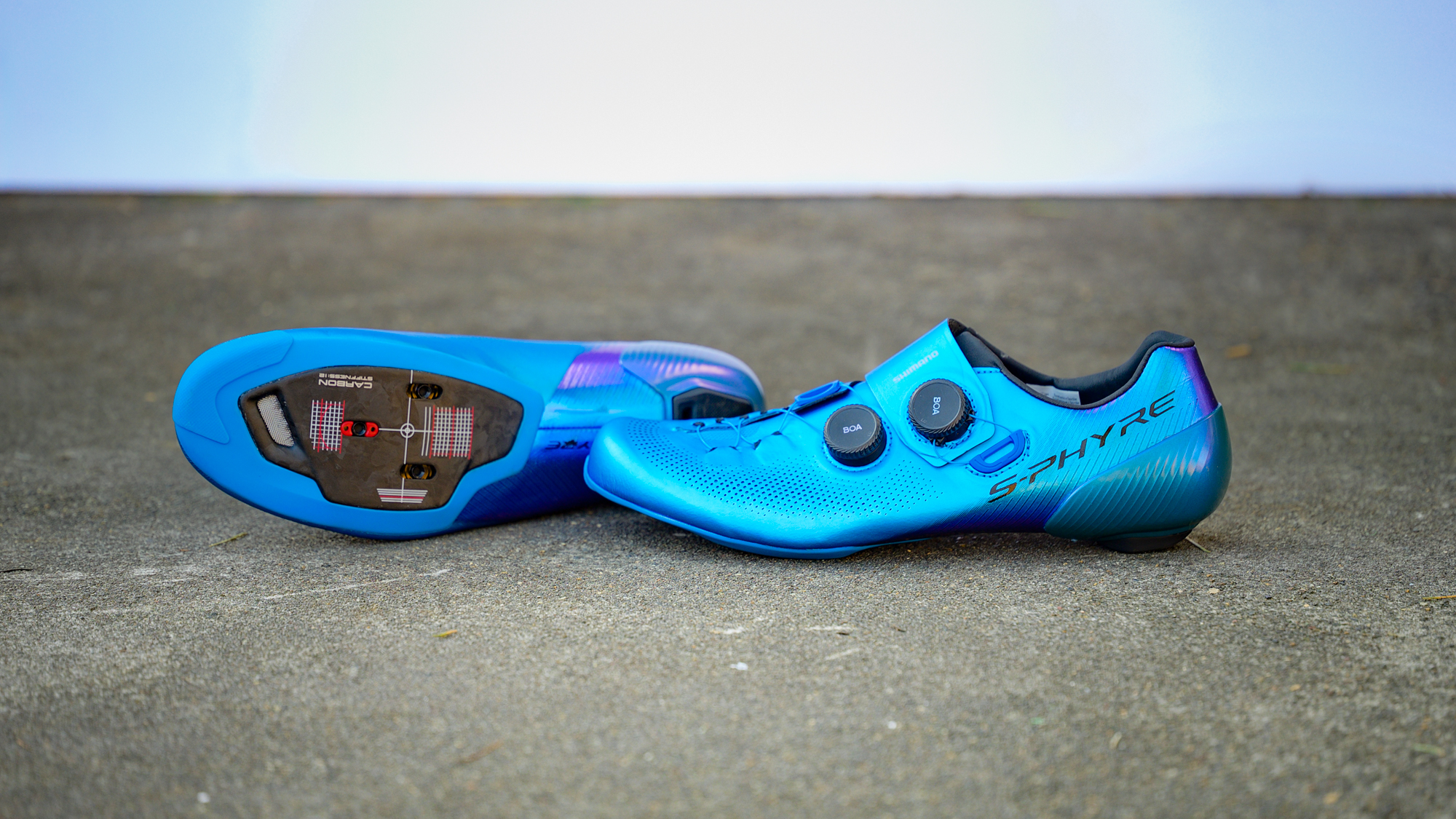
Specifications
Reasons to buy
Reasons to avoid
✅ You want lots of cleat adjustment: The long cleat adjustment slots gives a lot more room for you to find your perfect cleat position.
✅ You want a precise feeling shoe: Well measured fit and understanding of pedaling dynamics means the S-Phyre RC903 is a joy to spin the pedals in.
❌ You are rough with your shoes: While covering exposed carbon will stop any unsightly scratches, the micro-fibre leather used to wrap it is at risk of tearing.
Shimano and Specialized are, at least in the US, the two most common cycling shoe brands. Just about every bike shop carries both and comparisons are obvious. As you look to decide between the two, the signature difference is how Shimano handles the closure design. Instead of coming from both sides of the shoe and closing in the middle, as you'd expect from a shoe, Shimano wraps one side over the other. It's unique compared to almost everything on the market and it makes for a narrower fit throughout. This latest generation adds more vertical volume at the toe but as soon as you start to head towards the back of the shoe everything narrows out. It's not as narrow as Giro but more so than Specialized and that continues to the heel cup which is even narrower than the Giro Empire.
Outside of that, the big differentiator for Shimano is how much cleat adjustment the brand builds into the sole. It might not sound like a big difference but if you want to get your cleat way back to the centre of your foot, most brands won't do it. Shimano does, as does Fizik but Fizik is even more narrow than Shimano. If that's your desire, Shimano will do it and you also get excellent toe rub protection, great mid-foot retention, and incredible colour options. The only downside is that the covered section of the sole definitely takes damage compared to the carbon on the outside.
You can read more details in our full Shimano S-Phyre RC903 review.
Best hot weather cycling shoes
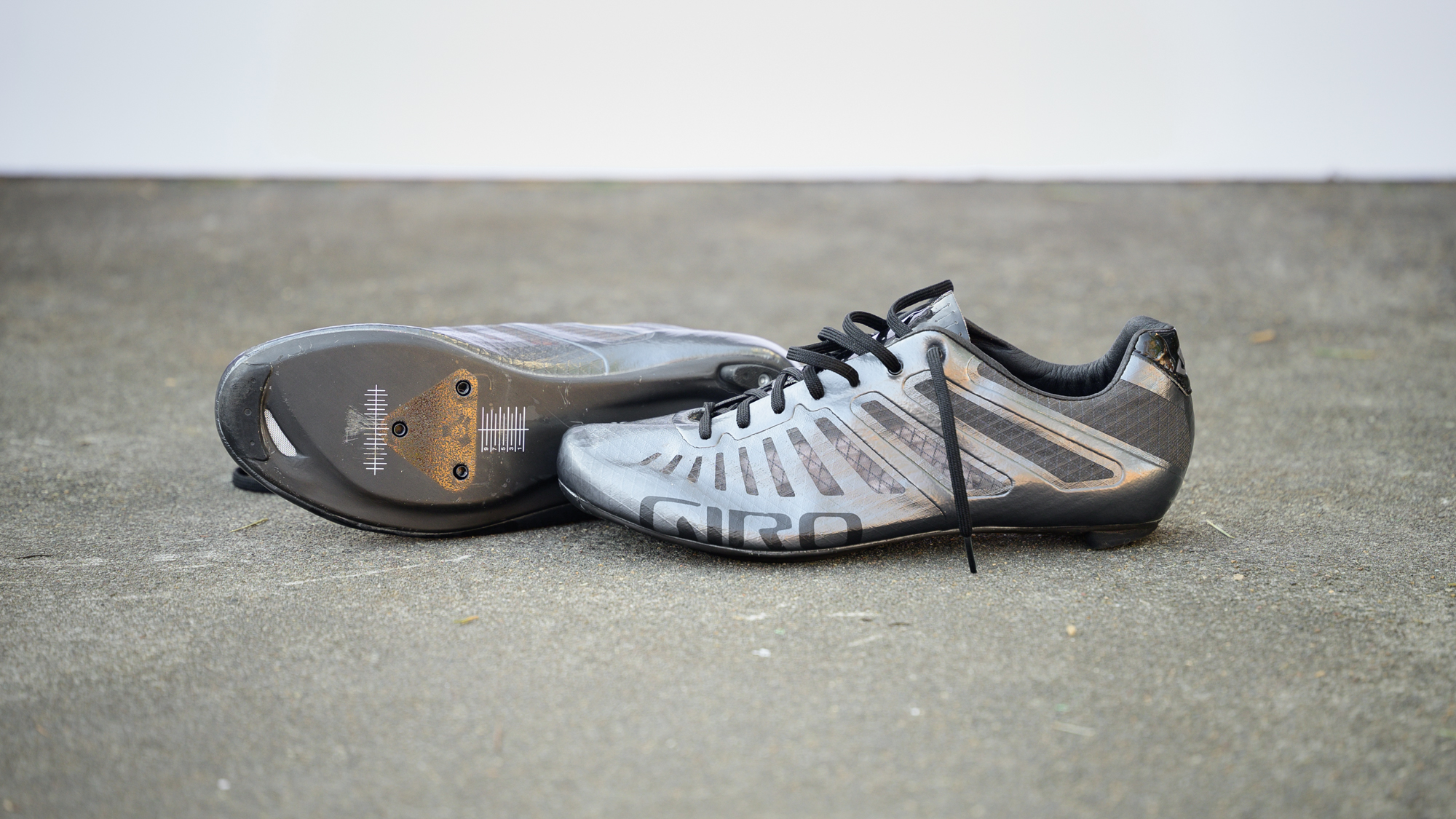
Specifications
Reasons to buy
Reasons to avoid
✅ You want a lightweight and airy shoe: The Empire SLX are one of the lightest shoes around and feature ample venting across the uppers and in the sole.
✅ You want laces: Ultra supple upper and stretchy laces give the Empire SLX's make these extremely comfortable
❌ You ride in colder climates: Considering the upper is thin enough that you can see the colour of your socks, its no surprise these aren't well suited to cold conditions
❌ You have wide feet: The narrow fit wont suit riders that need more volume.
The basic Giro Empire design has been around for years. The latest version is the Giro Empire SLX but the formula is essentially unchanged. Way back then, and now, the idea is to use a seemingly simple construction to make an ultra-breathable, lightweight and most exacting shoe possible. If you want a wide shoe or an ultra-stiff sole, you will want to look elsewhere. I almost added BOA dials to that list as well but there is a slightly heavier version with BOA dials if you must go that route. I strongly recommend letting go of that need though. The laces are a light stretchy material that never comes undone and there's a place to stash them so they don’t get in the way. The laces also mean the exact fit you need in every part of the shoe.
Either way though, this is a narrow shoe and even I can induce a bit of flex in the carbon sole. That's what makes it great though, it fits like a second skin and practically begs you to stand and dance on the pedals. On the upside, if you’ve got a low-volume foot like I do, Giro includes replacement arch supports to get you fit dialled in.
The minimal Synchwire construction is so thin that it's translucent giving an almost unrestricted level of airflow through the shoe. There is an additional sole vent that gulps in more air when you're on the move and the inner sole is perforated to allow that cooling air to reach the sole of your feet.
The downside of lightweight airy construction is that some things don't make the cut. The Synchwire upper looks and feels great but it doesn't stand up to toe rub and adding a plastic protector would have added weight. I suspect it's a somewhat similar story as to why there's no adjustability in the cleat placement.
Read more details in our full Giro Empire SLX review.
Best lightweight cycling shoes
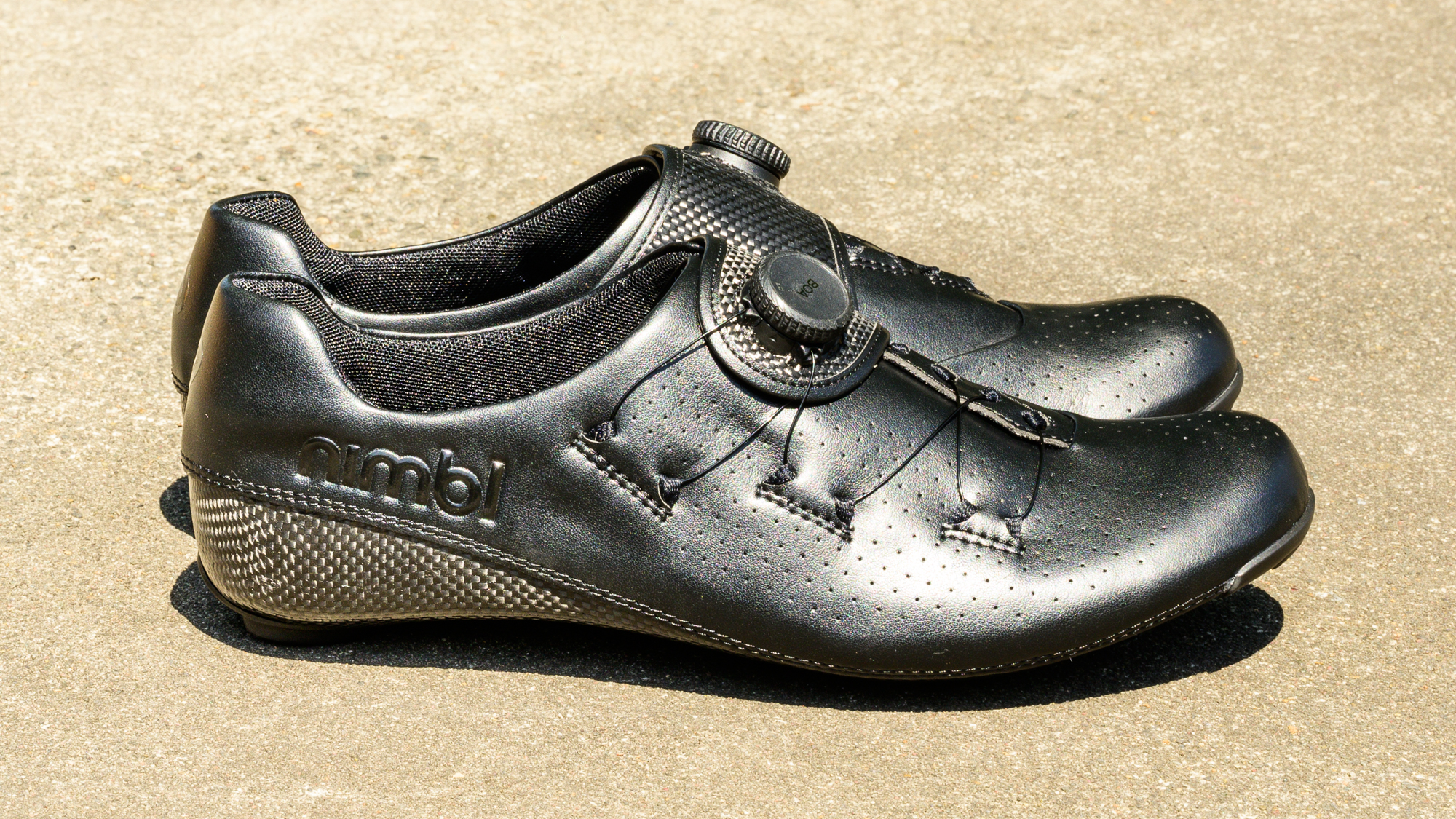
Specifications
Reasons to buy
Reasons to avoid
✅ You want the lightest shoes: Our EU44 test shoes weighed just 203g, making it the lightest shoes we have tested.
❌ You don't want to spend a fortune: Lightness is never cheap and the Feat Ultimate are some of the most expensive shoes on this list.
❌ You want adjustability: In the pursuit of lightness features like cleat slots and multiple BOA's are sacrificed.
The Nimbl Feat Ultimate is the lightest cycling shoe we have tested on Cyclingnews, at 203g per shoe. The low weight comes from the Feat Ultimate's minimal wrap-around design and extensive use of carbon for the sole and sections of the upper.
The carbon sole uses a tub-style shape that wraps around the edges of the foot to give an ultra-stiff pedalling platform similar to Bonts. There is no complex shaping or molding on the sole, instead to keep weight down the Feat Ultimates are pretty spartan underneath. There are a few holes for ventilation and the shoes come in either three-bolt or Speedplay drillings with no adjustment.
Carbon isn't reserved for the sole, most of the upper uses a leather-like synthetic microfiber material with a wrapping design that passes over the foot and secures the shoe. The closure strap is a section of microfiber-backed carbon fibre cloth that has no resin. A wide section anchors to the inside of the foot along the length of the shoe arch, wrapping over the foot, eliminating the need for a tongue. The shoe is secured with a single BOA Li2 dial rather than using multiple dials, a BOA cable crisscrosses down the foot to give retention to the lower section of the shoe, although in testing Josh Ross found it still left a lot of room around the toe box.
When you get to this level of weight savings it becomes a game of diminishing returns. The Feat Ultimates are lighter than pretty much any other shoe on the market however, despite being considerably more expensive, they are only 9g lighter than the Giro Empire SLX. If you absolutely must have the lightest shoe this is the one.
For more details, check out our Nimbl Feat Ultimate review.
Best cycling shoes for comfort
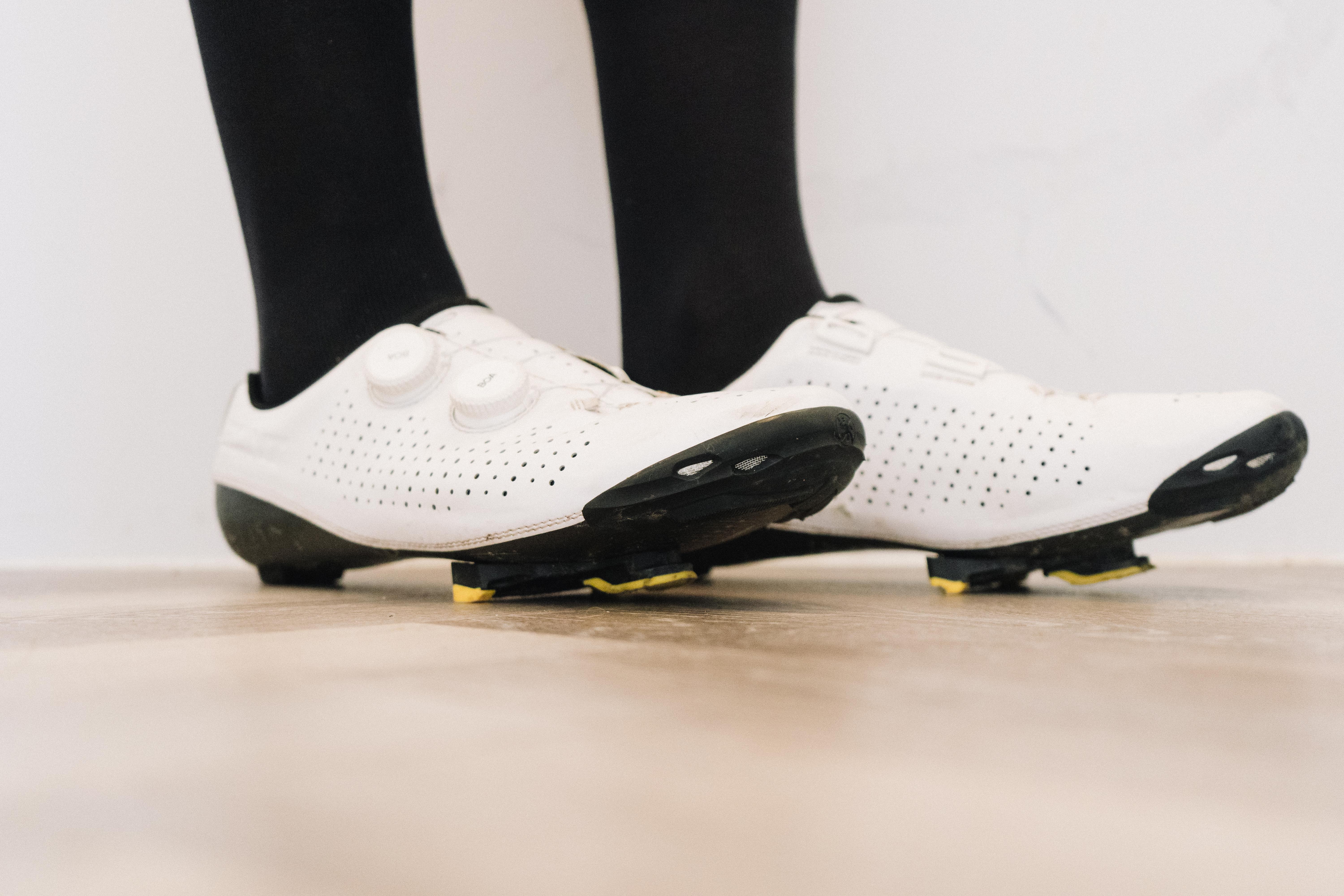
Specifications
Reasons to buy
Reasons to avoid
✅ You want a comfortable fit: Wide range of sizes, two width options and at home moulding makes the Vaypor's some of the most comfortable cycling shoes we have used.
✅ You want low weight: Bont Vaypors are incredibly light, only a gram or two heavier than the Nimbl's.
❌ You want a proper locked in feel: The fit is rock solid but they don't offer the truly locked in feel of stouter cycling shoes
If comfort is your top priority, the Bont Vaypor is a shoe that should be on the top of your list due to its multiple sizing options and unique DIY custom moulding feature. Not only is it supremely comfortable, but the Vaypors back it up with performance too.
To start with Bont offers the Vaypor in 19 sizes (36-50) along with standard and wide widths giving improved foot suitability across different shapes and types. While some cycling shoes have traditionally had a narrow shape Bont has developed its anatomical shaping based on 20,000-foot scans, giving the Vaypor's a wider midfoot and toe box to give plenty of room for the foot to comfortably splay out.
If the fresh from the fresh-from-the-box fit isn't quite perfect, Bont has another trick to further boost comfort. The Vaypor's can be custom moulded at home for a tailored fit to your feet. It's a simple process by heating them in the oven to 70 degrees allowing small adjustments to be made for an even more refined fit.
When Will Jones reviewed the Bont Vaypor's he found the nonstretch Japanese Durolite upper and two BOA Li2 dials retention gave a close and secure fit, spreading the pressure over the foot to avoid any hot spots.
Bont backs up this comfort with performance too. The low stack and ultra-stiff bath-tub style carbon sole give a direct pedalling platform to ensure no watt is lost. The Vaypor are also extremely light, at 202g (EU42) they are very close to matching the lightest shoes on this list, the Nimble Feat Ultimate.
You can read more details in our full Bont Vaypor review.
Best cycling shoes with laces
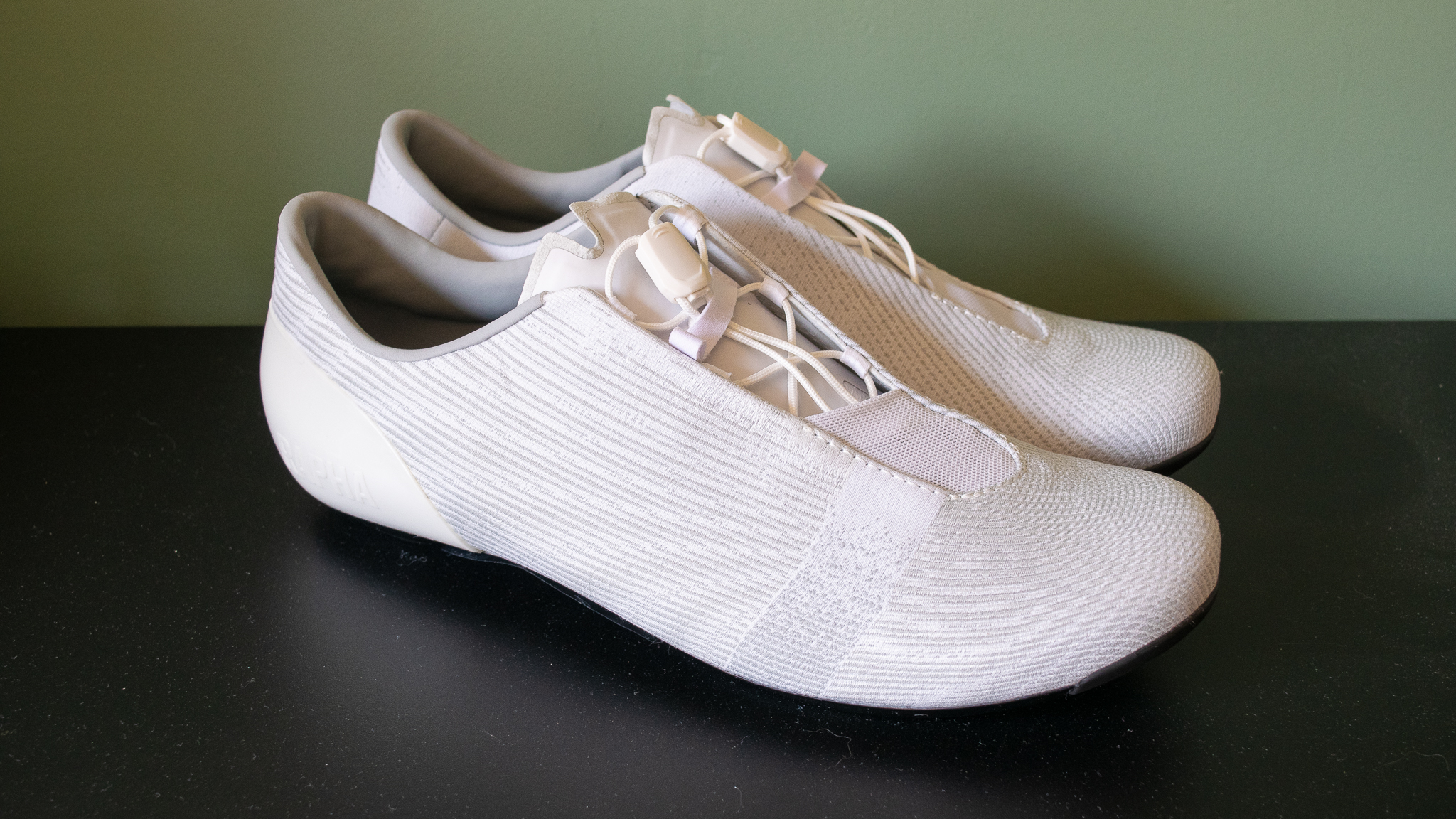
Specifications
Reasons to buy
Reasons to avoid
✅ You want thes best of laces and BOA: The Speed Lace design offers the comfort of a lace up design with the ease of adjustment that comes with a BOA.
✅ You want a great looking pair of cycling shoes: There is just something about the simplicity of laces that gives elevates a cycling shoe aesthetic
❌ You want a super secure fit: Laces can't be cinched down as tight as a BOA, if you want a locked in feeling Rapha go for the Pro Team BOA model.
The Pro Team Lace-Up shoes feature pretty much all the same design features as the Pro Team shoes, however rather than use BOA's Rapha has specced the shoes with a 'Speed Lace' closure system to secure the shoe and tighten it down onto the foot.
There are already some great lace-up shoes in this guide, namely the Giro Empire SLX, however Rapha's 'Speed Lace' gives the Pro Team Lace-Up some significant advantages over conventional laces. Rather than using old-fashioned knots, the 'Speed Lace' system cinches the shoes tight and uses a plastic toggle to keep everything secure. The toggle is then tucked under an elasticated band and any excess lace is neatly tucked into a mesh pocket. Not only does this design speed up taking your shoes on and off but Tom was also able to adjust the Speed Lace while riding, which is something you can't really do with traditional laces.
Laces are never able to match the security of a BOA closure however the Rapha Pro Team Lace-Ups offer a good middle ground between traditional laces and a BOA setup. Not everyone needs their foot to be completely locked down and the Pro Team Lace-Ups still do a good job of pulling the flexible Powerweave uppers to comfortably hold the foot in place. Underneath the shoe is a glossy carbon sole which felt stiff enough that there was no discernible flex during testing.
Not only do the Rapha Pro Team Laces perform well, but we really like the clean styling too, especially in the fresh white colourway that our tech writer Tom reviewed.
For more details, check out our Rapha Pro Team Lace-Up review.
Best wide fit cycling shoe
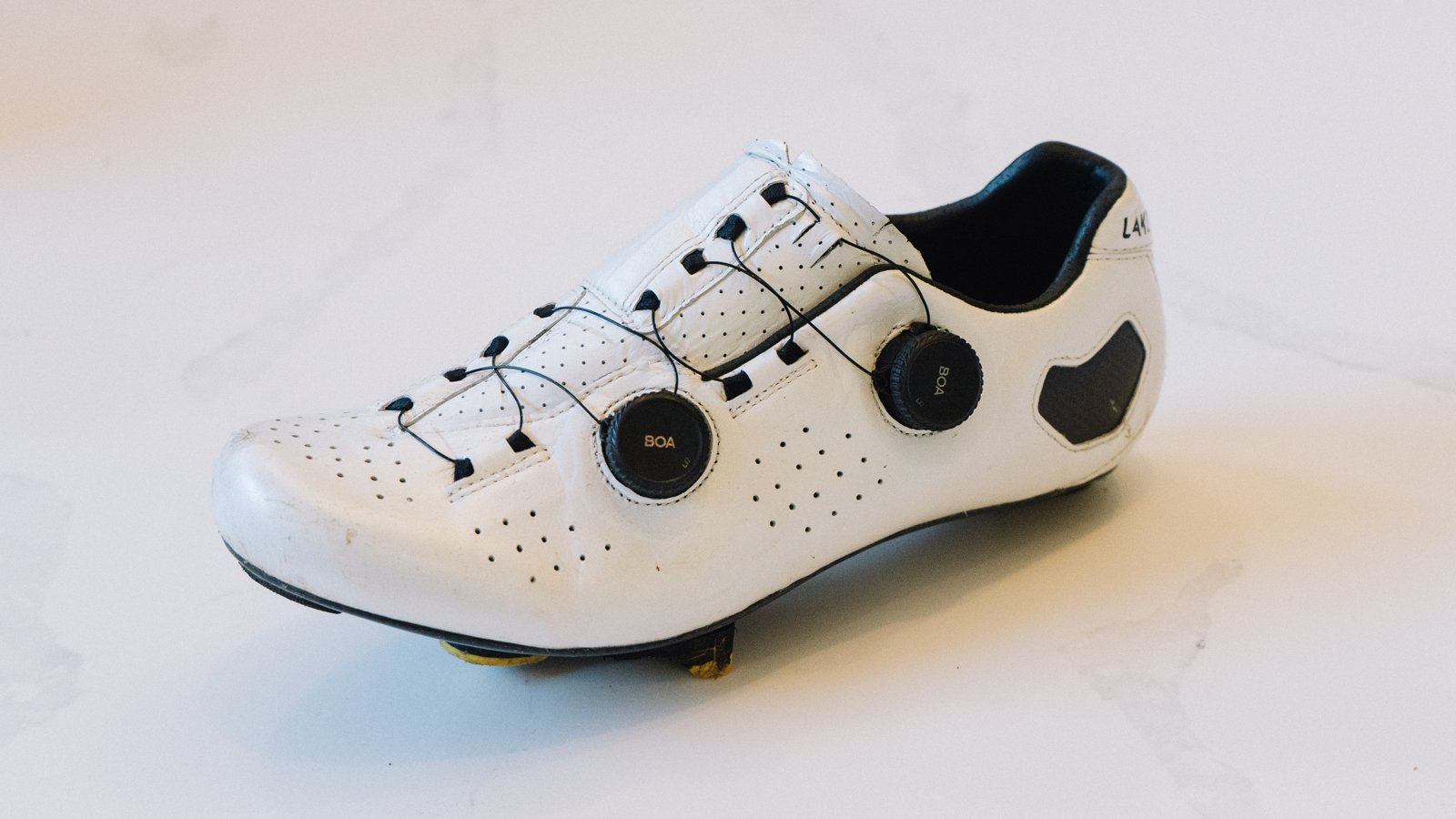
8. Lake CX333
Specifications
Reasons to buy
Reasons to avoid
✅ You have never found a shoe wide enough: Lake offers three different widths with the regular size fitting wider than most cycling shoes.
✅ You want custom molding: Like the Bont's, Lake also features at home custom molding to get a perfect fit.
❌ You want a light shoe: The CX333 are some of the heaviest shoes on this list.
❌ You want a rearward cleat position: In testing Will struggled to get the cleats far back enough for his preferred fit.
We have a buyer's guide written by our resident wide-footed tester Will Jones specifically covering the best cycling shoes for wide feet listing the brands that cater for those who need a broader fit. Will's top pick, and the go-to for many bike fitters, is the Lake CX333 road shoe.
Lake offers narrow, regular and wide widths although even though the CX333 uses Lake narrower CX Race last, the regular width is wider than most other performance shoes on the market. Although the CX Race last is wide in the midfoot, it narrows in the toe box so if you need properly large volume shoes you will be better served by a Lake shoe that uses its CX/TX Sport.
Not only is there a load of sizing options, but you even have the choice of either Klite Kangaroo leather or Clarino Microfiber upper with Outlast temperature regulating lining. Lake uses a Carbitex panel to aid arch support and, like the Bont's, the CX333 are heat moldable using an internal Thermaform Carbon Fiber heel counter to fine-tune the fit if needed. The stiff carbon sole has moulded vents for cooling and the cleat can be vertically adjusted using a variety of markings, although Will would ideally like a little more rearward bias for the cleat position.
Best cycling shoe for stiffness
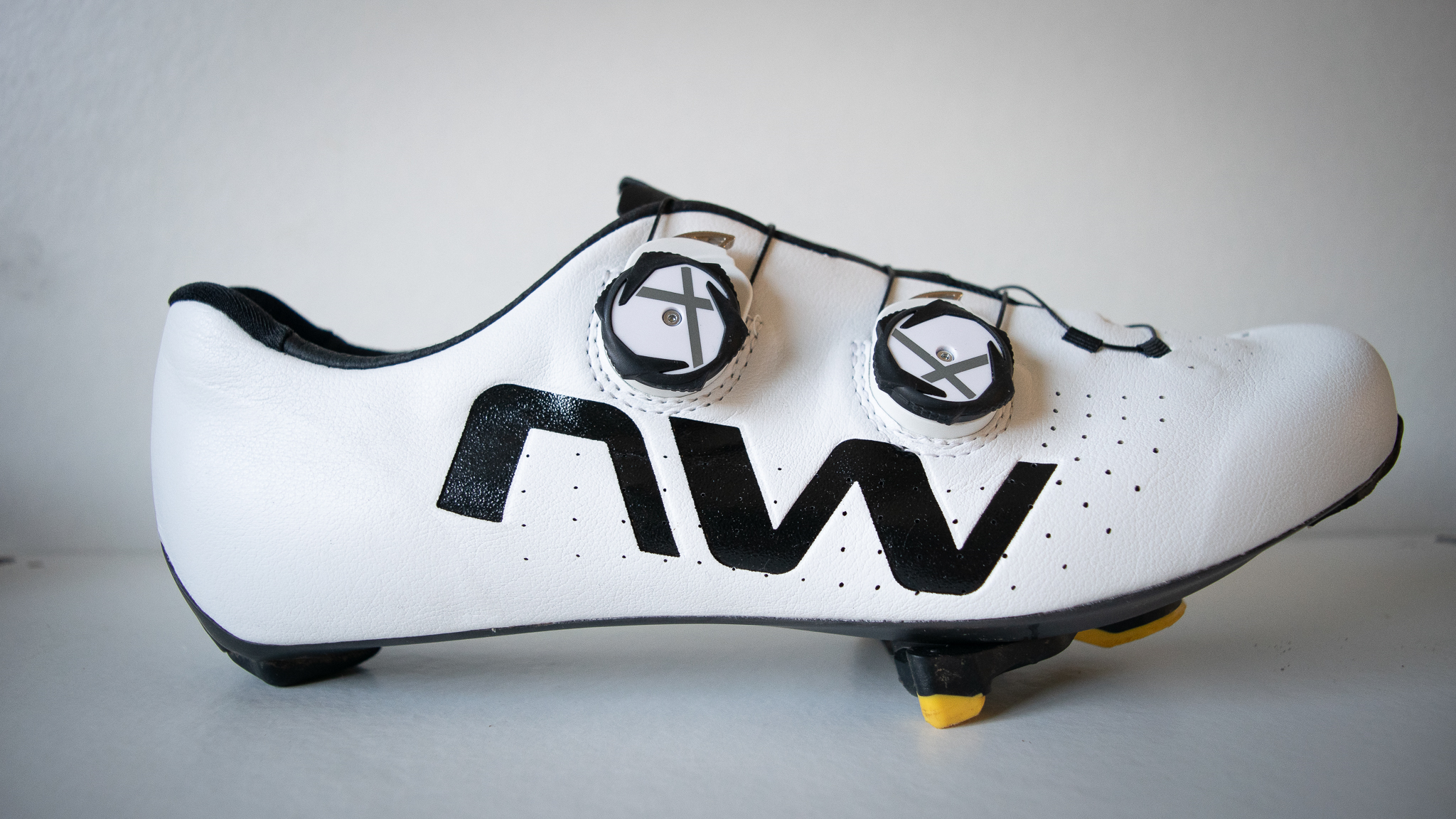
Specifications
Reasons to buy
Reasons to avoid
✅ You want a super stiff sole for peak power transfer: If your dropping huge watts this is the shoe for you.
❌ You don't want a stiff sole: Rigid soles aren't for everyone, lighter riders or those spending a long lie in the saddle over rough road may prefer a softer alternative.
The Veloce Extremes are Northwave's best cycling shoe and were developed alongside Ineos Grenadiers Filippo Ganna. Our tech writer Tom tested them out and found the Veloce Extremes to be an extremely stiff shoe, designed for power transfer with a focus on performance.
To achieve its optimised power transfer, Northwave performed max sprint tests, kinematic analysis, and muscle activation testing to develop the patented Powershape sole. The carbon sole has been formed into a tub shape with raised arch sections and a high tail section to support the heel and ankle. Northwave claims a dramatic 15% reduction in perceived exertion between these and the previous generation Extreme Pro 3. We can't verify this number however Tom can confidently say that these are some of the stiffest shoes he has tested and as he points out "If they can deal with the pure horsepower of Top Ganna they can easily cope with power from a mere mortal".
Stiffness is useless if your foot isn't secure when riding the stiff uppers give the shoe structure and support for a close fit, with everything held in place by two SLW3 dials developed by X-Dial. The shoes come with 3mm and 5mm thick insoles to further customise the shoes.
For more details, check out our Northwave Veloce Extreme review.
Cycling shoes we also tested
When it comes to the best cycling shoes, there were a lot more that almost made it than in some of the other guides. Shoes that are incredibly good but miss out on inclusion when compared to other options. If there's something about any of these that sparks a connection to your needs, you won't go wrong.
The first pair of shoes that were close but ultimately missed the main list is the Sidi Shot 2. Sidi is a somewhat legendary name in cycling shoes and is considered one of the best cycling shoe brands. The only reason these missed out is price. If you do find pricing that works, you'll get a traditional pointed-toe box and a narrow fit paired with the best heel retention of any of the shoes we have tested. The Tecno-3 Push Flex system is also incredibly comfortable but there's no pop-open function and no micro-adjustment for loosening.
The Fizik Vento Stabilita Carbon is also a shoe that does one thing better than anyone else. The design leaves the upper completely soft under the arch and then pulls the strap for closure through that same section. The effect is perfect for anyone who has a high arch and the shoe is also incredibly light with tons of cleat adjustability. Despite all the strengths, the strap that runs across the top of the foot can sometimes create a pressure point. It's a shoe that solves a very specific problem while potentially creating another. The Vento Powerstrap R2 Aeroweave is another excellent performance option from Fizik, its a great for hot weather as long as you are happy with velcro straps rather than laces or dials. Fizik gets a third shout-out for its Fizik Vento Omna Wide as an affordable wide-fit shoe, it may not have the stiffness of a carbon sole but they are genuinely roomy, offer a secure single BOA closure and are available at an affordable price point.
A lot of the shoes featured in this guide are expensive, if you're looking for a more affordable option the Adidas The Road BOA and Adidas The Road Lace cycling shoes are a decent mid-price option. The soles of the Adidas The Road Shoe and the Adidas Road BOA cycling shoe are the same so take your pick between the BOA or lace-up versions.
Yet another shoe that lost out to sibling rivalry is the Specialized S-Works Ares. The Ares is one of my favourite shoes and a shoe I always grab when I need something I know will work. It locks your foot in place better than anything else out there. The problem is that it's an older shoe at this point and Specialized has moved on to a newer design. The Torch has most of what makes the Ares good but also has the wider toe box and, arguably, looks a lot better.
Although the Quoc M3 Air were good enough to step onto a podium when worn by Geraint Thomas at the Giro, they didn't quite make the cut for our guide. Quoc has kept it simple with the M3 Air and they offer a comfortable fit and have a great aesthetic. The closure dials didn't offer as much adjustment as I wanted and the mesh 'windows' required extra cleaning to keep them looking nice.
If you are looking for a left-field option to stand out at the club ride, the Q36.5 Unique cycling shoes would be a good option. The fit is akin to feels like wearing a fine Italian leather loafer with its supple supportive Power Wrap upper and cushy Elastic Interface insole, the only tradeoff for comfort is money.
The last shoes that almost made the list are the Rapha Pro Team shoes, instead, I opted to include the Speed Lace versions. The BOA Pro Team offers the same carbon sole and Powerweave upper but with a closer fit, Not everyone needs a shoe that will lock the foot in place but if you are racing or partial to a town sign sprint and you are looking at the Rapha Pro Team range, go for the BOA.
How to choose the best cycling shoes for you
The first thing you are going to want to think about is what kind of cleat you would prefer to use. This list is mostly options for road cycling shoes and that generally means a three-bolt cleat mounting system. These shoes also make great shoes for indoor cycling and are compatible with the Look Delta cleats used by the Peloton Bike. We have a separate guide to the best indoor cycling shoes if you want more options.
If you'd prefer to use a two-bolt cleat then you need a shoe designed for that type of cleat and for gravel bike pedals. If you want options for two-bolt shoes, take a look at our list of the best gravel bike shoes.
With that out of the way, the next decision is what kind of closure system you want. I test a lot of shoes and I'm not someone who's all that bothered with different systems. If given the option, I'd choose laces because I like the look and I feel they are the most comfortable. The downside is that there's no way to reach down while riding and loosen or tighten, your shoe just a little. For some people, that is a deal breaker. If you constantly fiddle with your shoes, then there's nothing easier and more precise than a good BOA dial. Fizik also has the Powerstrap design which lets you reach down and make changes although it lacks the precision and speed of a BOA. There are also dial closure alternatives to a BOA used by some of the best cycling shoe brands, such as the Sidi Tecno-Push and Northwave X-Dial.
Once you've made those decisions, you are likely looking at only a small number of shoes and now it's time to decide how wide your foot is. There's been a big shift to wider cycling shoes over the last few years. For some, that's been a boon. I don't have wide feet though so it's been less exciting for me.
You might also consider your arch support at this point but it is a little less important. Unlike width, you can add extra arch support down the road. Some shoes give arch support options that you can easily swap out, or Bont has high-quality insoles you can use in shoes of your choice. Aftermarket options are also available from non-cycling brands such as Solestar. There is also a whole world of custom insoles that you can move from shoe to shoe.
Why do road bike shoes use three-bolt cleats?
Most people don't start with clipless pedals and shoes. As a cyclist progresses in their, hopefully, lifelong cycling adventure there tends to be a point at which people decide to start clipping in. It's at this point that most people look at two-bolt cleats and three-bolt cleats, and the shoes that match, and wonder why anyone would choose the option you can't walk in.
The reason road bike shoes use three-bolt cleats is all about the specific needs of road cycling. Road cycling focuses on pedalling and there's no need to stop other than, perhaps, a short walk across the pavement to the coffee shop table. Lots of riding and concentrating the pressure of the pedal in a smaller spot can lead to discomfort in that spot. Three-bolt cleats are bigger and better disperse the pressure.
Another reason for three-bolt cleats instead of two is part style and part tradition. Modern-day two-bolt shoes can work just fine because the sole of the shoe can be stiff enough to disperse the pressure. It wasn't always like that though. When shoes were softer, pedals had to do more of the work and at this point road bike tradition was to use a three-bolt cleat so that's what road bike shoes tend to use.
If you want to buck the trend and use a two-bolt shoe that's walkable, you can do it. You'll need to look at mountain bike, or gravel bike pedals and shoes but there are plenty of great options. There's no technical reason you can't pair what you like with a road bike.
Two-bolt cleats are a good option for commuters and also winter use when that coffee shop floor might be wet and the treads on gravel bike shoes will be a lot less slippery than the smooth soles of the best road cycling shoes.
What about four-bolt cleats and compatible shoes?
Okay, it's true, not all road cycling cleats attach to road cycling shoes with three bolts. There are also four-bolt Wahoo Speedplay cleats that work with Speedplay pedals and there are some options for shoes using that interface. It's a relatively uncommon option though. For one thing, it only applies to one type of pedal while three-bolt systems encompass a variety of different cleats and pedals.
Also, Speedplay cleats will mount to shoes that use a three-bolt system with the use of an included adapter, although this will increase the pedal stack height by a few millimetres.
Should cycling shoes be stiff?
The answer here depends on your needs. If you spend more time on a bike, and you are generally riding harder, you will want a stiffer shoe. Part of this is a matter of efficiency and not wanting to lose power to flex in the shoe. Part of it is that a flexible shoe can cause discomfort over time.
On the other hand, you might prefer a softer shoe. If you aren't pushing that hard or riding that far, a softer shoe is going to feel more comfortable. A softer shoe also tends to be less expensive, as the sole may be made of nylon or fibreglass composite rather than the carbon fibre used in higher-priced shoes and the upper may be less technical.
Do lighter cycling shoes make a difference?
This question is dear to my heart. I am a huge proponent of lighter shoes. I find there is something wonderful about not feeling the weight of your shoe as you move and the numbers can be significant. 100 grams is a little less than 1/4 of a pound and you can feel that much weight. As with everything related to cycling though, lighter tends to be more expensive. Keeping a light shoe stiff requires a better sole and keeping the upper light will mean more expensive materials.
Do good cycling shoes make a difference?
I started by answering the weight and stiffness question before jumping into the meat of the question here. The qualities you can expect from a good pair of cycling shoes are that they will be lighter and stiffer. Sometimes, as in the case of Lake or Sidi, you will find that there's a tradeoff and instead of being lighter, the shoes will have things like padding, venting, and other technologies.
The other thing that inherently comes along for the ride is cost. So in some ways, the question is more akin to "Is it worth spending the money for better cycling shoes?". The bottom line is that if you can spend the money, you will get a better product and it's nice to have better quality cycling shoes.
Stiff, light, high-quality shoes are a joy to wear. You'll find it's more comfortable to ride farther and to ride harder. You'll have fewer issues with hot spots in your feet and the power you put into your pedals will directly translate to propelling you forward.
Keep in mind though, that this becomes more of an issue the more experienced you become with your cycling. When you are just starting out with gentle rides for 30 minutes to an hour, you are asking a lot less of all your equipment and that includes your shoes. At that stage, you might even appreciate a softer shoe.
Alternatively, if you start racing you will find yourself a lot more interested in translating your effort into forward movement. If racing isn't your thing then comfort for long adventures is also an important consideration. When I head out for 12-14 hour rides I am very interested in making sure that my feet don't hurt.
How do we test?
As part of the review process, every cycling shoe is inspected and weighed by our testers before we start riding. Careful consideration is taken when setting up each shoe to determine how easy it is to dial in cleat position and how the shoe integrates with different pedal systems.
When reviewing cycling shoes it's vital to spend as much time as possible with as many different products as we possibly can. For shoes, that means covering a wide range of riding to find out the strengths and weaknesses of each shoe. Test rides include short and intense sessions and long rides in the 6-8 hour range. The terrain is important too and we make sure to take the shoes and ride everything from bike paths to mountains to see how they respond. We do a bit of everything in them from climbing to intense indoor racing. Weather plays a role too and our testers ride in all weather to get an idea of how the shoes perform in a range of climates.
Get The Leadout Newsletter
The latest race content, interviews, features, reviews and expert buying guides, direct to your inbox!
Josh hails from the Pacific Northwest of the United States but would prefer riding through the desert than the rain. He will happily talk for hours about the minutiae of cycling tech but also has an understanding that most people just want things to work. He is a road cyclist at heart and doesn't care much if those roads are paved, dirt, or digital. Although he rarely races, if you ask him to ride from sunrise to sunset the answer will be yes. Height: 5'9" Weight: 140 lb. Rides: Salsa Warbird, Cannondale CAAD9, Enve Melee, Look 795 Blade RS, Priority Continuum Onyx
